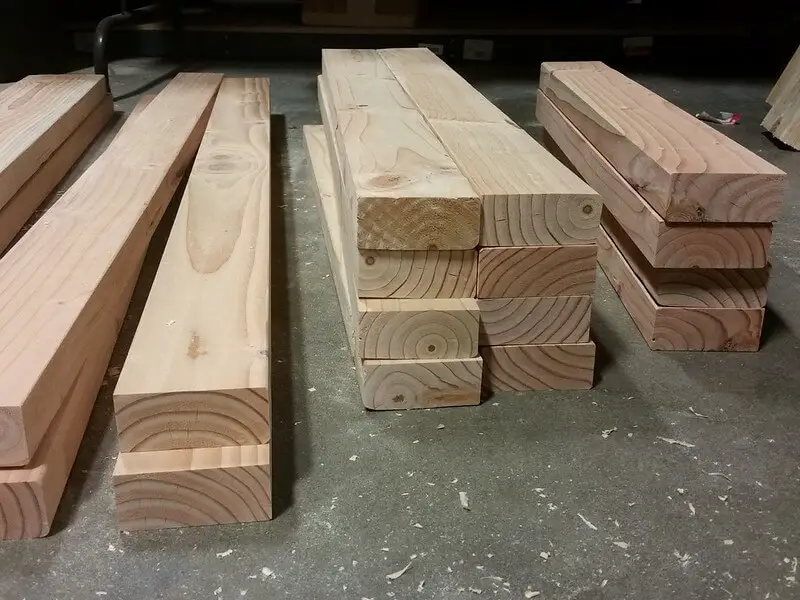The Douglas fir is one of the most popular softwoods. Its scientific name is Pseudotsuga menziesii, a Greek name that means ‘false hemlock’. This is because some people confuse the tree for hemlock.
Contrary to popular belief, the Douglas fir is not a pine. It is not a true fir either. This article will shed some light on what Douglas fir wood is and some of its properties.
Related Article: Southern Yellow Pine vs Douglas Fir
What is Douglas fir wood?
Douglas fir is an evergreen conifer in the Pinaceae family. The tree is native to western North America. There are two types of Douglas fir; the coast Douglas fir and the rocky mountain Douglas fir.
The coastal Douglas fir mainly grows in British Columbia and California. The rocky mountain Douglas fir grows in Canada, the southwestern US, and Mexico.
This tree is one of the tallest trees in North America. It can grow up to 250ft tall and up to 6ft wide. Like other conifers, the Douglas fir has needle-like leaves.
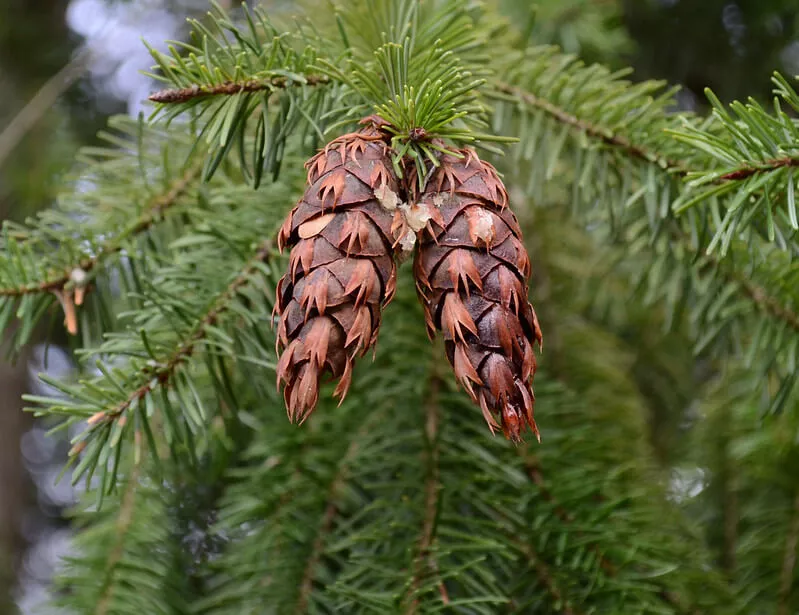
The Douglas fir has many properties that give it an edge over its softwood counterparts. Let’s first look at its mechanical properties.
Mechanical Properties of Douglas Fir
| Feature | Score |
| Modulus of rupture | 12,500 lbf/in2 (86.2 MPa) |
| Elasticity modulus | 1,765,000 lbf/in2 (12.17 GPa) |
| Maximum crushing strength | 6,950 lbf/in2 (47.9 MPa) |
| Hardness | 620 lbf (2,760 N) |
| Shrinkage percentage | Radial: 4.5%Tangential: 7.3%Volumetric: 11.6%T/R Ratio: 1.6 |
| Wood gravity (at 12% Moisture Content) | 0.51 |
| Average dried weight | 32 lbs/ft3 (510 kg/m3) |
Properties of Douglas Fir Wood
Appearance
The color of this wood depends on the tree’s age and location. But generally, its heartwood has a light reddish-brown color. The sapwood has a light-brown color.
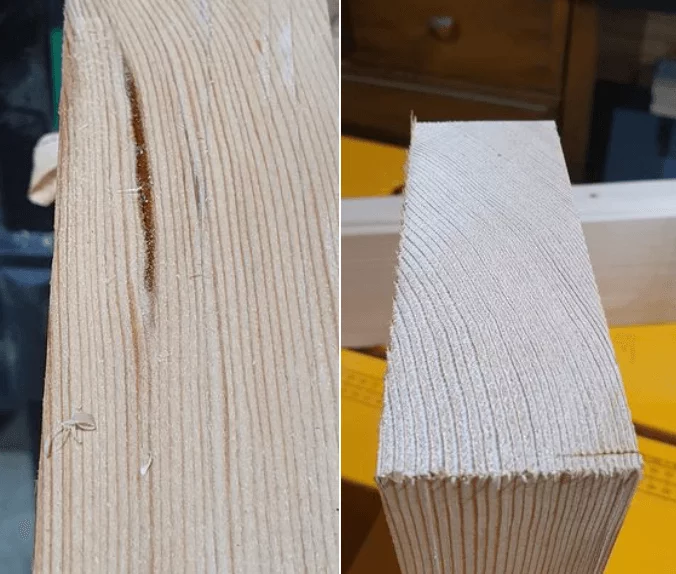
The wood has a straight or slightly wavy grain. It has a medium to coarse texture and a moderate natural luster.
Douglas fir has small or medium-sized resin canals. It also exhibits an abrupt transition between the earlywood and the latewood.
Durability
The Douglas fir has a dense grain pattern that makes it resistant to moisture. Unfortunately, the wood is moderately durable to decay and is susceptible to insect attacks.
Treating this wood can enhance its durability, but its heartwood and sapwood resist impregnation with preservatives.
Although moderately durable, research has revealed that Douglas fir is more durable than softwoods such as spruce and pine.
Workability
- Sawing and planning
Douglas fir has good workability with both hand and machine tools. But one must remember a few things when working with this wood. Its heartwood and sapwood vary in hardness; thus, you must use sharp tools to avoid surface ridging or tear out.
- Nailing and screwing
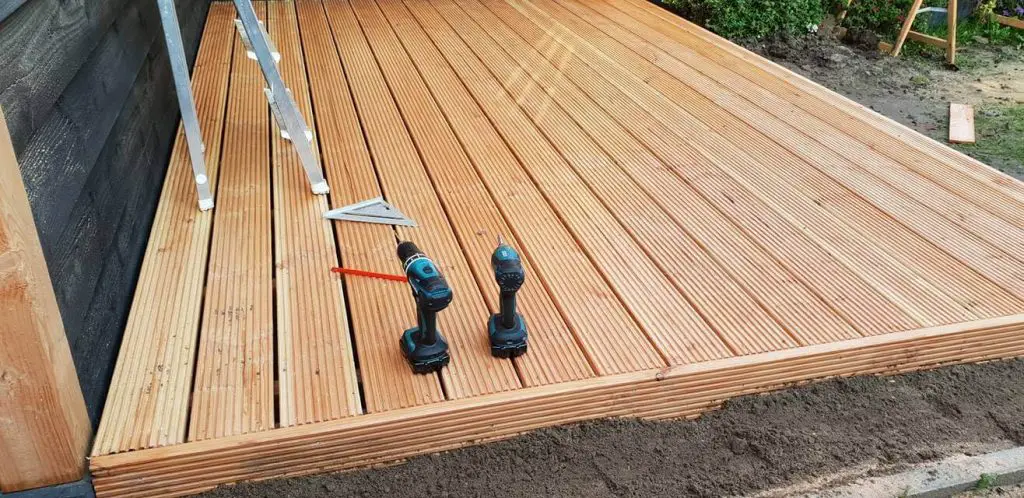
The wood contains resins that tend to have a blunting effect on cutting edges. However, it glues, nails, and screws well.
- Stability
This wood is more stable than most softwoods. Its density prevents it from shrinking or warping when exposed to outdoor elements. It also has an impressive strength-to-weight ratio making it the ideal wood for construction projects.
- Finishing
Douglas fir is challenging to stain. This is because the wood has an uneven texture and a porous grain structure. Also, the wood’s red or orange tint tend to pop through the stain.
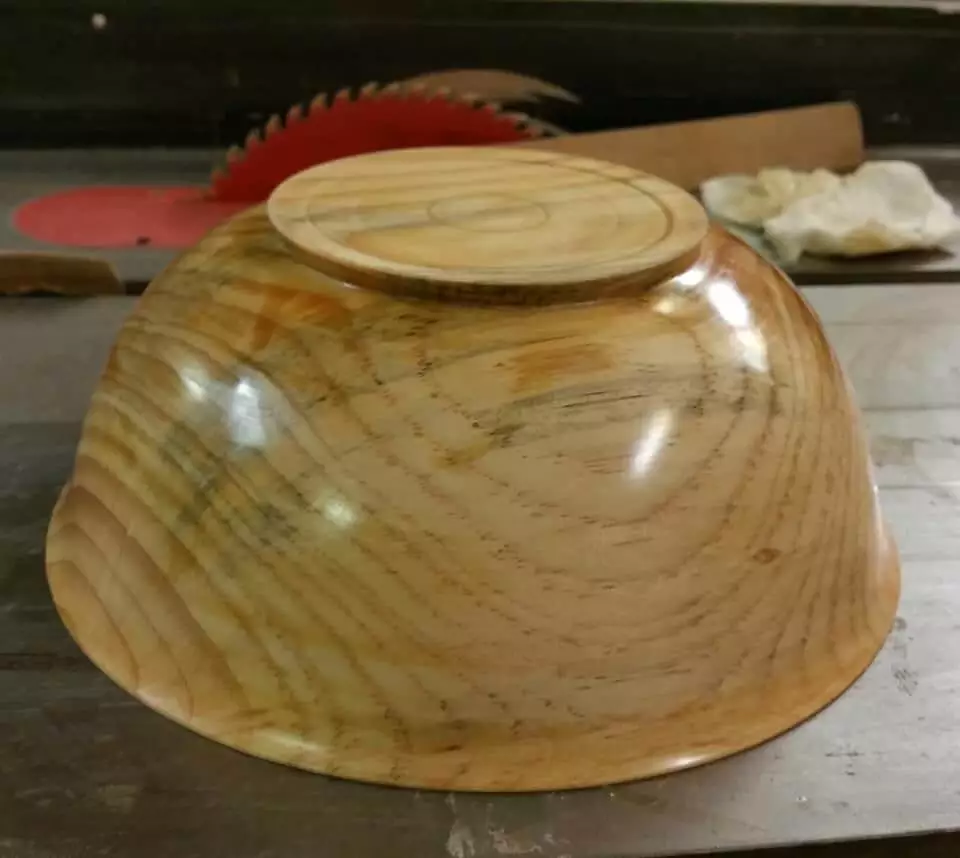
Although challenging, staining this wood is still possible. You can achieve good results if you prepare the wood surface well and use the right product. A gel stain is an excellent stain for Douglas fir wood. It’s easy to apply and produces a uniform colour without making your wood look blotchy.
A gel stain is usually thicker than a water-based gel. Its thickness makes it ideal for use on porous woods. You can spread the stain evenly before the wood absorbs it.
Sustainability
Douglas fir is very sustainable. The trees account for a fifth of North America’s total softwood reserves. They also grow fast and can last long after being harvested.
The wood thrives under different conditions, from coastal to mountain climates. It is not listed in the CITES Appendices. Also, the IUCN considers it a species of least concern.
Allergies
Working with this wood can have various side effects, including giddiness, nausea, and skin irritation.
Pricing
The price of Douglas fir depends on the quality of the piece. Construction lumber sells considerably, but old-growth wood or reclaimed boards are much more costly.
Uses of Douglas Fir Wood
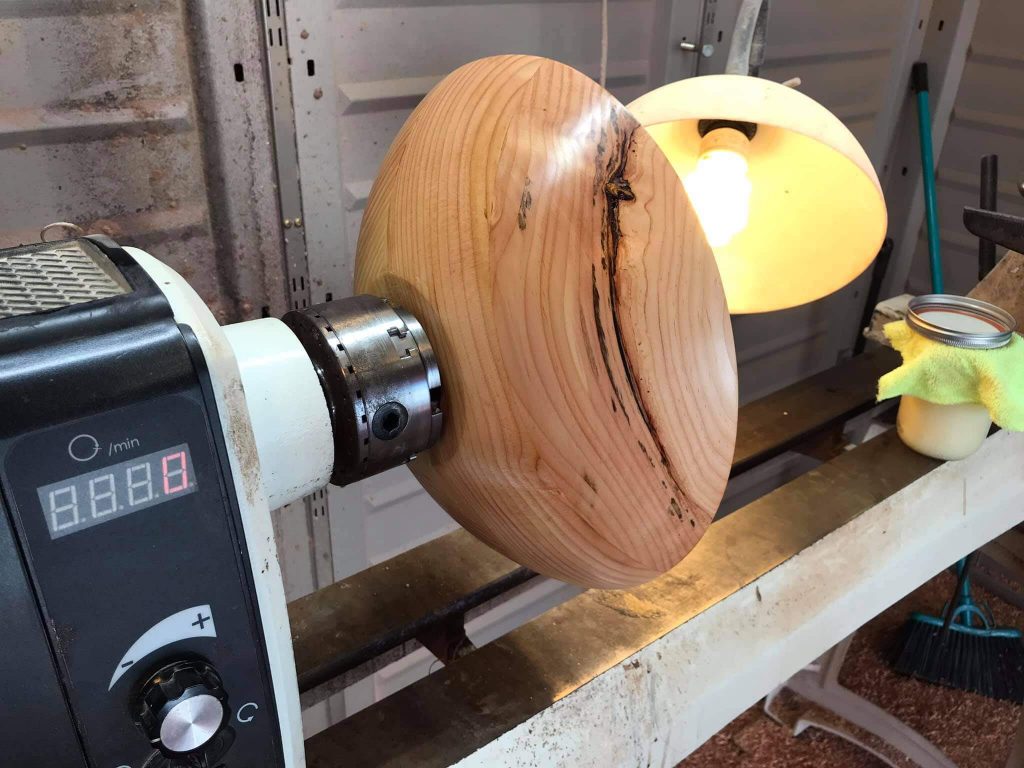
- Construction lumber: This wood is ideal for construction projects, thanks to its remarkable strength-to-weight ratio.
- Joinery: The Douglas fir is a very versatile softwood. It’s suitable for making baseboards, window sills, moldings, and mantel pieces.
- Boat building: The dimensional stability of this wood prevents it from buckling or bending making it the ideal wood for building boats.
- Making veneers: This wood is aesthetically appealing. Quarter sawn pieces display a straight grain pattern, while flatsawn pieces display a wild, wavy grain pattern. Its beauty makes it a suitable wood for making veneers.
- Furniture making: Although hardwoods are dominant in furniture making, the Douglas fir has proven to be suitable for this work. Although a softwood, the Douglas fir is stronger than hardwoods such as basswood.
- Aircraft making: This wood is dimensionally stable and can withstand outdoor elements well.
How to Stain Douglas Fir
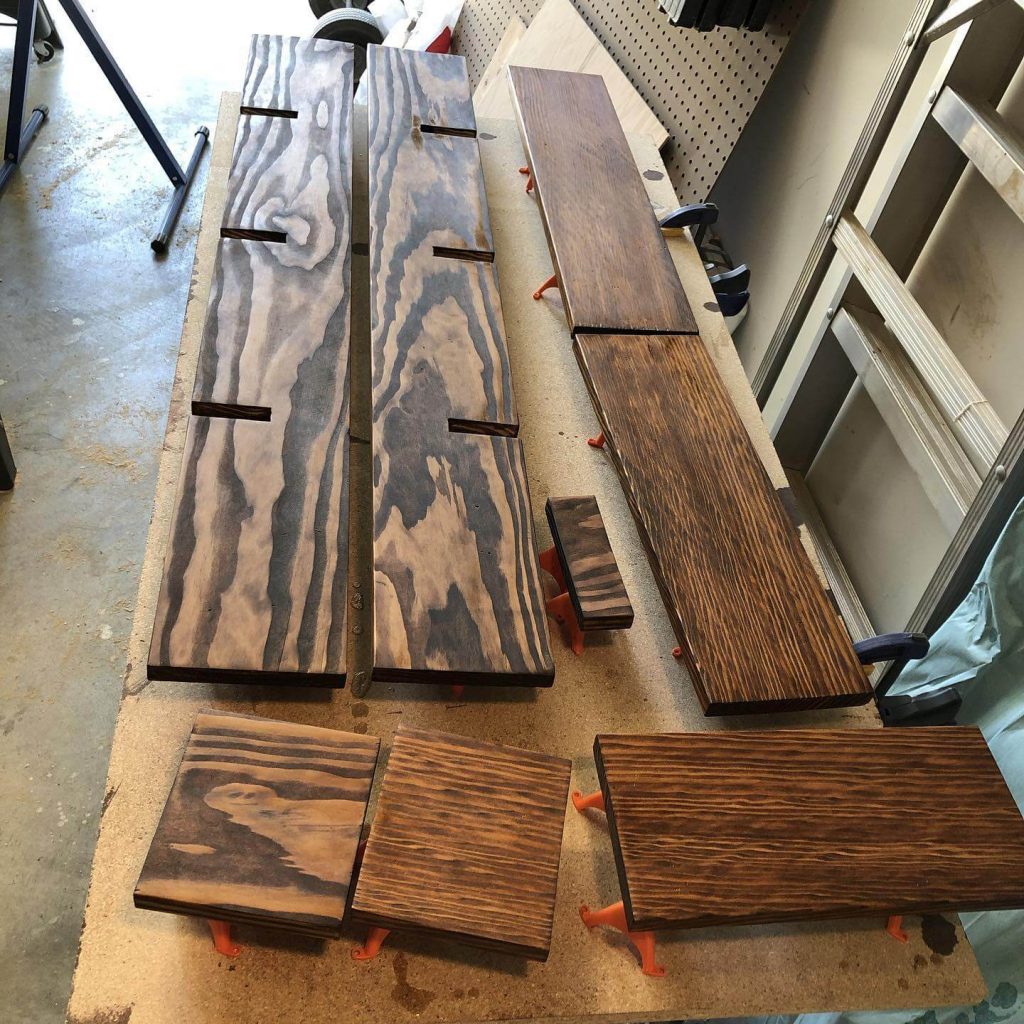
As mentioned earlier, this may not be a straightforward process. But, if you opt to stain Douglas fir, here’s how to go about it.
Step 1: Clean the wood
The first step is cleaning and sanding the wood using 100-grit sandpaper. Sanding the wood will remove surface inconsistencies, thus leaving you with a smooth surface. It will also help to open up the wood pores.
You should sand the wood in its grain direction to avoid scratching it. You should also apply even pressure if you want uniform smoothness.
Step 2: Wipe off dust
Next is to wipe off dust using a piece of cloth. Staining a dusty surface will leave your wood with stain bubbles.
Step 3: Applying a conditioner
Douglas fir has an uneven texture. Thus, applying a conditioner can help the wood take stain well. The rule of thumb is to apply two coats of conditioner before staining the wood.
Before proceeding to the next step, ensure that the conditioner dries out completely.
Step 4: Applying the stain
As mentioned earlier, a gel stain is ideal for this wood. You can also use an oil stain, but you’ll have first to seal the wood using wax paste or linseed oil.
A gel stain has a thick consistency; thus it is best to apply thin coats. A thick coat may bring about drying problems.
Allow the wood to dry out completely.
Check out more wood profiles here
Summary Douglas Fir Wood
The Douglas fir is one of the most resilient softwoods on the market today. Numerous properties set this wood apart from other softwood. They include;
- Unique grain pattern
- Excellent strength-to-weight ratio
- High resistance to outdoor weather
- Reasonable prices and readily available.
So, if you’re looking for a strong, versatile softwood for your next project, consider using Douglas fir.

